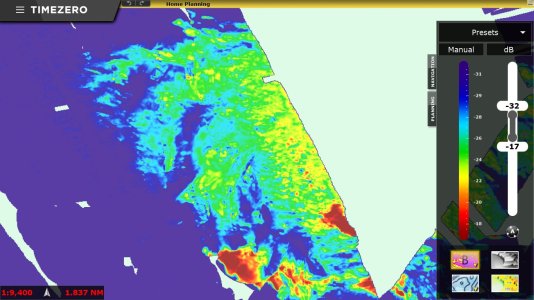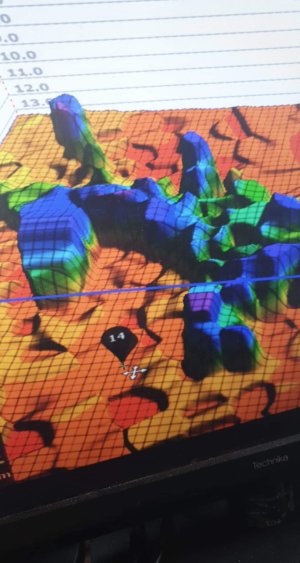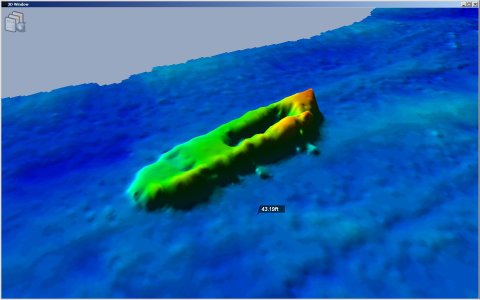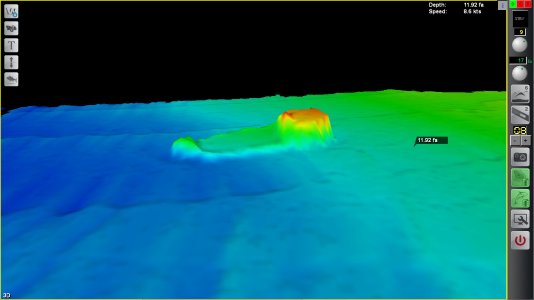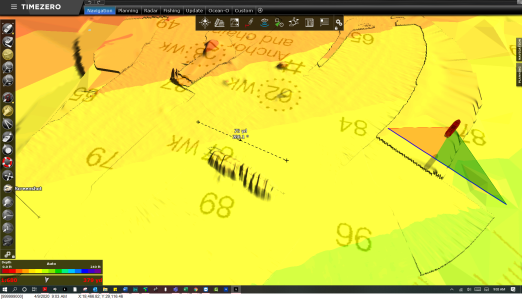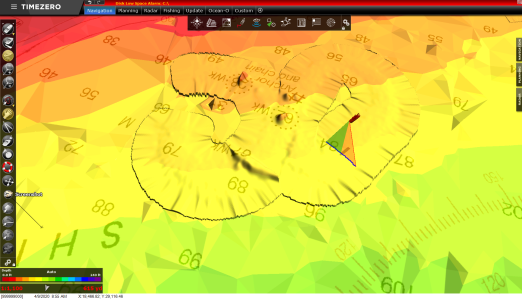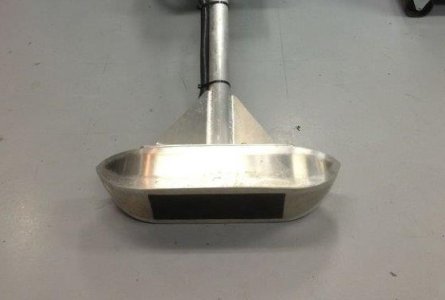You are using an out of date browser. It may not display this or other websites correctly.
You should upgrade or use an alternative browser.
You should upgrade or use an alternative browser.
Dff3d vs wassp
- Thread starter Dean1345
- Start date
S
Snips
Guest
Dean1345,
The DFF3D is 165Khz and the high frequency WASSP is 160Khz (it is also available in 80khz). When you say Maxsea I assume you mean TZ Pro (Nobletec). Both WASSP and DFF3D are compatible with the proper licenses. Both need to be paired with a GPS heading sensor. The motion sensor for the DFF3D is in the transducer where the WASSP can use a variety INU's. While the side to side beam width is the same the for/aft beam width is much narrower for WASSP than the DFF3D. A narrow beam width yields better bottom detail. Probably the biggest difference is WASSP's ability to record bottom hardness (backscatter), the DFF3D doesn't record hardness. If you are using a Hondex sounder you are recording hardness in a single beam format which is OK if you are mapping a small area. In the below screen shot we are record bottom hardness data at twice the water depth, 960ft wide in a single pass. One advantage that the DFF3D over the WASSP is it can use a variety of different transducer configurations i.e. thur-hull, pocket mount or transom. WASSP only has one style of 160khz, which is a pocket/can mount.
Hope this information helps.
Snips
The DFF3D is 165Khz and the high frequency WASSP is 160Khz (it is also available in 80khz). When you say Maxsea I assume you mean TZ Pro (Nobletec). Both WASSP and DFF3D are compatible with the proper licenses. Both need to be paired with a GPS heading sensor. The motion sensor for the DFF3D is in the transducer where the WASSP can use a variety INU's. While the side to side beam width is the same the for/aft beam width is much narrower for WASSP than the DFF3D. A narrow beam width yields better bottom detail. Probably the biggest difference is WASSP's ability to record bottom hardness (backscatter), the DFF3D doesn't record hardness. If you are using a Hondex sounder you are recording hardness in a single beam format which is OK if you are mapping a small area. In the below screen shot we are record bottom hardness data at twice the water depth, 960ft wide in a single pass. One advantage that the DFF3D over the WASSP is it can use a variety of different transducer configurations i.e. thur-hull, pocket mount or transom. WASSP only has one style of 160khz, which is a pocket/can mount.
Hope this information helps.
Snips
Attachments
S
Snips
Guest
Dean1345,
Its a fair question. Building bottom data is about collecting PBG points. The closer together these points are the more detailed the information. The below screen shot is the densest PGB bottom data that I have. Currently you are adding one point at a time, depending on the depth a DFF3D can add 10-50. If you were going to paint your house and the level of detail was going to be the same, would you choose a 1" paint brush or a 12" roller?
Snips
Its a fair question. Building bottom data is about collecting PBG points. The closer together these points are the more detailed the information. The below screen shot is the densest PGB bottom data that I have. Currently you are adding one point at a time, depending on the depth a DFF3D can add 10-50. If you were going to paint your house and the level of detail was going to be the same, would you choose a 1" paint brush or a 12" roller?
Snips
Attachments
S
Snips
Guest
Dean1345,
A narrow beam works better than wide. It took ten passes to map that wreck by contrast a DFF3D could do it in a single pass with higher detail. If you wanted higher detail than the DFF3D (50 points) below is a WASSP mapped vessel at 200 points.
Snips
A narrow beam works better than wide. It took ten passes to map that wreck by contrast a DFF3D could do it in a single pass with higher detail. If you wanted higher detail than the DFF3D (50 points) below is a WASSP mapped vessel at 200 points.
Snips
Attachments
S
Snips
Guest
S
Snips
Guest
S
Snips
Guest
Dean1345,
In order of detail. Single beam, DFF3D and WASSP.
Snips
In order of detail. Single beam, DFF3D and WASSP.
Snips
S
Snips
Guest
Septimus,
Not a typo, less (single beam) to more (WASSP).
Snips
Not a typo, less (single beam) to more (WASSP).
Snips
WASSP it the king of kings for this type of stuff. You get what you pay for.
Aggeloseco
Furuno Fan
Snips, do you think this kind of mount would be ok for the wassp transducer for a small rib boat? (6m)
https://www.transducerliftmount.com/
https://www.transducerliftmount.com/
S
Snips
Guest
WalneyDalBosco
New member
Good morning gentlemen,
I use DFF3D and I have known limitations of mapping at depths greater than 200m.
As I am very interested in fishing between 250m and 600m, I ask if it is possible to make 3D maps or record bathymetry with DI-FFAMP and R509-LH transducer with 2xTZT3-12F (SXC20) at these depths?
I also ask if it is possible to use WASSP simultaneously for depths greater than 200m.
Thanks
I use DFF3D and I have known limitations of mapping at depths greater than 200m.
As I am very interested in fishing between 250m and 600m, I ask if it is possible to make 3D maps or record bathymetry with DI-FFAMP and R509-LH transducer with 2xTZT3-12F (SXC20) at these depths?
I also ask if it is possible to use WASSP simultaneously for depths greater than 200m.
Thanks
WalneyDalBosco,
Mapping those depths the WASSP F3X at 160kHz has a maximum mapping depth of 525 meters (or 1722 ft). Multibeam Sounders generate the best mapping data over that of typical single beam sounders due to the increased PBG data points that are generated from the multibeam.
-Deep Blue :cool
Mapping those depths the WASSP F3X at 160kHz has a maximum mapping depth of 525 meters (or 1722 ft). Multibeam Sounders generate the best mapping data over that of typical single beam sounders due to the increased PBG data points that are generated from the multibeam.
-Deep Blue :cool
Similar threads
- Replies
- 2
- Views
- 256
- Replies
- 6
- Views
- 287
- Replies
- 1
- Views
- 721
- Replies
- 7
- Views
- 411


